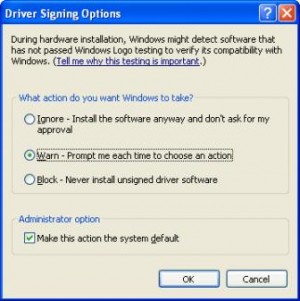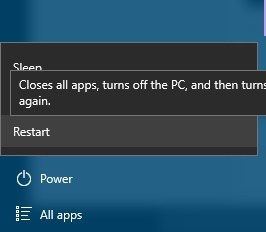
- #Permanently disable driver signing windows 10 how to#
- #Permanently disable driver signing windows 10 install#
- #Permanently disable driver signing windows 10 drivers#
- #Permanently disable driver signing windows 10 driver#
- #Permanently disable driver signing windows 10 for windows 10#
#Permanently disable driver signing windows 10 drivers#
Windows itself does not have any special requirements for drivers to be signed by EV certificates.
#Permanently disable driver signing windows 10 driver#
The portal currently requires all driver submitters to have a valid EV Code Signing Certificate registered to their account. What about Extended Validation Certificate Dev Portal package signing? The portal will sign the driver correctly such that it will work on all platforms that you indicate. Then, using the Windows 10 HLK, merge the two test logs and submit your driver along with the merged HLK/HCK test results to the
#Permanently disable driver signing windows 10 install#
If you don’t want to use the method above to permanently disable Driver Signature Enforcement, here is a solution for you to temporary turn off Driver Signature Enforcement to install unsigned driver:-Press the Windows key + R to bring up the Run box.
#Permanently disable driver signing windows 10 for windows 10#
How do I sign a driver so that it is compatible with Windows Vista, Windows 7, Windows 8, Windows 8.1, and Windows 10?Īll you need to do is run the HLK tests for Windows 10 and run the HCK tests for Windows 8.1 and earlier versions as you have in the past. Option 2: Disable Driver Signature Enforcement Once. In addition, if Secure Boot is set to OFF, then drivers signed with existing cross-signed certificates will continue to be valid.

#Permanently disable driver signing windows 10 how to#
Topic on MSDN for information on how to test sign. Signing Drivers during Development and Test How do I sign drivers during development and testing? Will require all new submissions be signed with an EV Code Signing Certificate no matter what OS you plan to support with your driver package. The changes described in this post apply only to Windows 10, version 1607. It will become enabled the next time you reboot Windows 10 unless you try this way again.

This is a temporary way to let driver signature enforcement disabled. Issued prior to July 29th, 2015 will continue to pass signing checks on Windows 10, version 1607. How to Install Unsigned Drivers Windows 10 Method 1: Use the Advanced Boot Menu. To ensure backwards compatibility, drivers which are properly signed by a Existing drivers do not need to be re-signed. What about existing drivers? Do I need to re-sign these drivers to get them to work with Windows 10, version 1607? To summarize, on non-upgraded fresh installations of Windows 10, version 1607 with Secure Boot ON, drivers must be signed by Microsoft or with an end-entity certificate issued prior to July 29th, 2015 that chains to a supported cross-signed CA. Future versions of Windows will block boot drivers. To prevent systems from failing to boot properly, boot drivers will not be blocked, but they will be removed by the Program Compatibility Assistant. PCs with Secure Boot OFF will still permit installation of cross-signed drivers.ĭrivers signed with an end-entity certificate issued prior to July 29th, 2015 that chains to a supported cross-signed CA will continue to be allowed. PCs upgrading from a release of Windows prior to Windows 10 Version 1607 will still permit installation of cross-signed drivers. What are the exact exceptions? Are cross-signed drivers still valid?Įnforcement only happens on fresh installations, with Secure Boot on, and only applies to new kernel mode drivers: All drivers submitted to the portal must be signed by an EV certificate. Getting an Extended Validation (EV) Code Signing Certificate Windows Hardware Developer Center Dashboard portal

If you are a driver developer, here is what you need to do:Įnsure that you submit new drivers to Microsoft via the These changes limit the risk of an end-user system being compromised by malicious driver software. We’re making these changes to help make Windows more secure. OS signing enforcement is only for new OS installations systems upgraded from an earlier OS to Windows 10, version 1607 will not be affected by this change. Starting with new installations of Windows 10, version 1607, the previously defined driver signing rules will be enforced by the Operating System, and Windows 10, version 1607 will not load any new kernel mode drivers which are not signed by the Dev Portal. However, due to technical and ecosystem readiness issues, this was not enforced by Windows Code Integrity and remained only a policy statement. Windows Hardware Developer Center Dashboard portal (Dev Portal) Note: If you have no idea whether an installed program is “good” or not, err on the side of keeping it, lest you accidentally remove something rather critical to Windows’ healthy operation).That beginning with the release of Windows 10, all new Windows 10 kernel mode drivers must be submitted to the


 0 kommentar(er)
0 kommentar(er)
